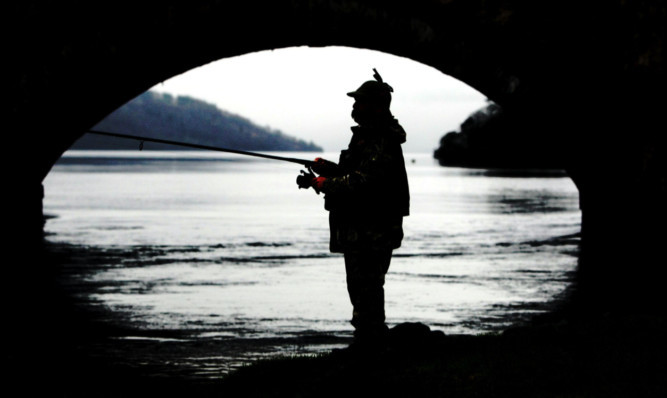The number of salmon in Scottish rivers has plunged to its lowest level in living memory, it has been claimed.
The Salmon and Trout Association (Scotland) blamed coastal netting and urged ministers to act quickly to prevent what it called the indiscriminate killing of depleted and fragile stocks.
It said the provisional count to the end of July on the River North Esk in Angus showed salmon numbers to be two-thirds of the five-year average.
Based on angling and in-river netting catches and fish counters, the picture across the rest of the country was also very poor.
The association represents fisheries owners and anglers and is a long-term opponent of coastal netting.
Chairman Hugh Campbell Adamson said: “The very limited numbers of salmon returning to our shores reflect poor marine survival for the second year running.
“On many rivers, angling catches to date are no more than 50 % of what one would normally expect.
“Given the gravity of the situation, Scottish ministers need to intervene immediately to stop any further killing of salmon this season by the coastal nets.
“In recent weeks, salmon returning to the coast after their marine migrations have, because of the low water levels in most rivers, been either reluctant to or unable to enter their rivers of origin.
“Due to these summer conditions, depleted stocks have meandered up and down the coast where they have been highly vulnerable to the coastal nets.
“These nets have been able to kill an entirely disproportionate number. The Government’s support for the netting industry and its failure to regulate or limit catches is now coming home to roost.”
According to the official Scottish Government figures there were 66,000 rod-caught salmon in Scotland last year, with fixed engine and net and coble fisheries accounting for another 24,000.
A Scottish Government spokesman said an independent review of wild fisheries management would consider the management of netting.
He added: “The recent assessment of the status of Scottish salmon stocks by Marine Scotland Science suggests that the overall number of salmon returning to Scottish rivers has increased over recent years.
“Overall numbers of spring-running salmon have generally stabilised over recent decades and both summer and autumn stock component demonstrate an increasing trend.”
